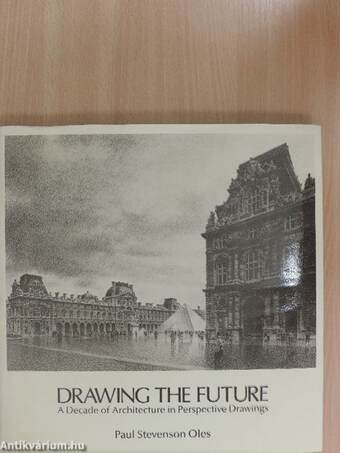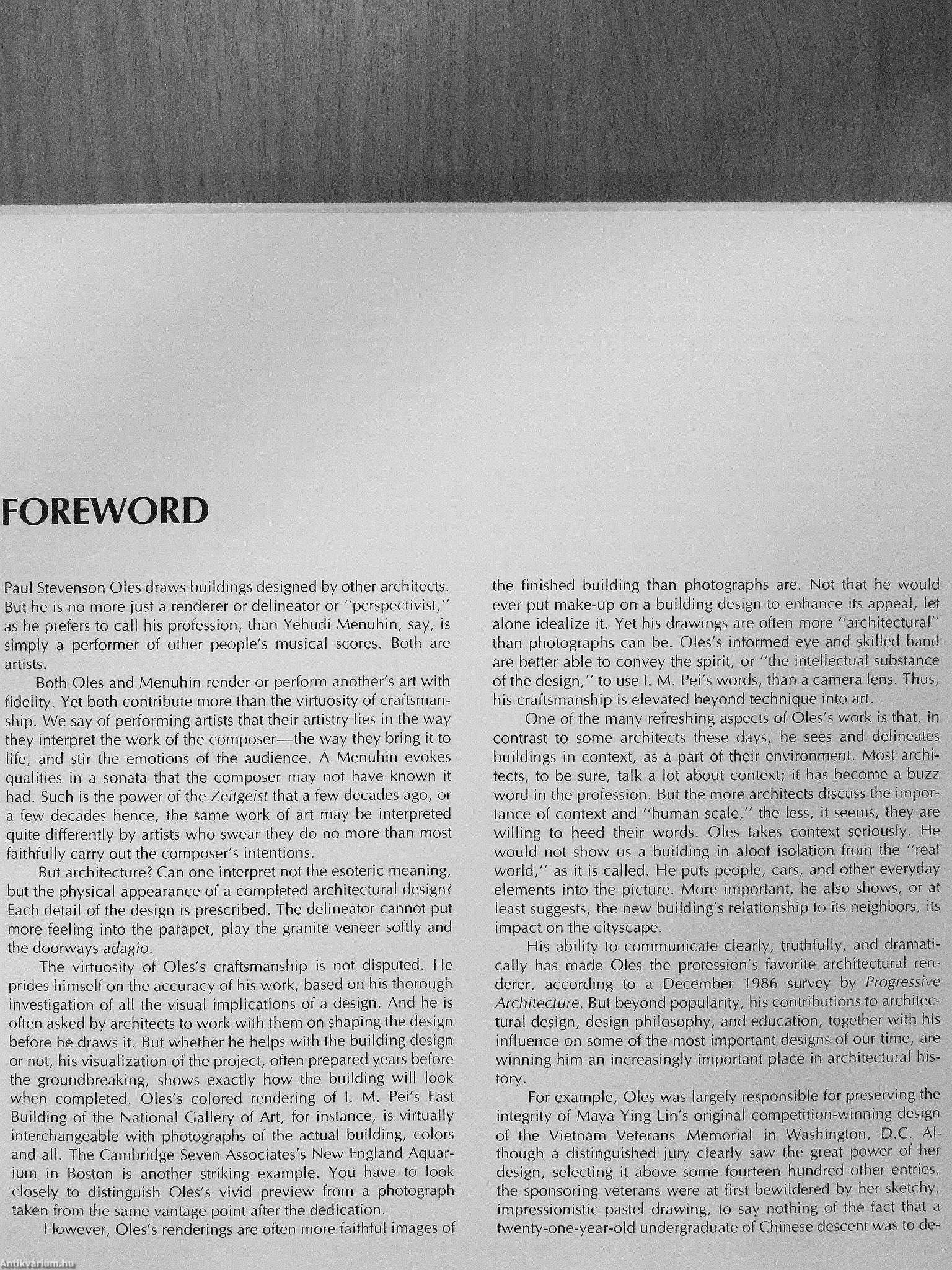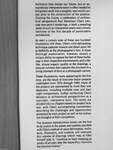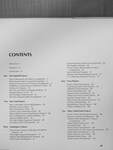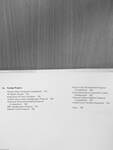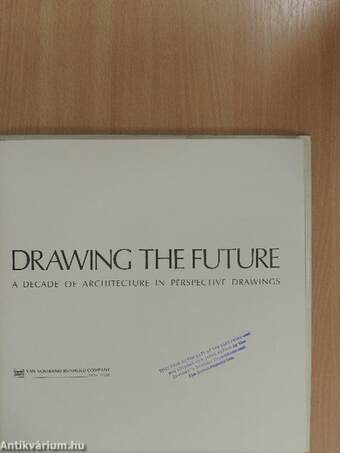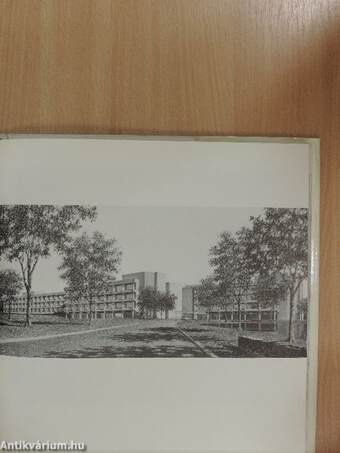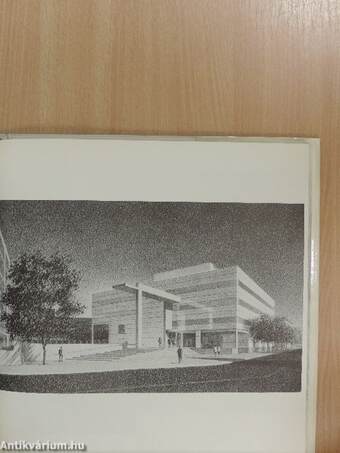1.067.327
kiadvánnyal nyújtjuk Magyarország legnagyobb antikvár könyv-kínálatát

VISSZA
A TETEJÉRE
JAVASLATOKÉszre-
vételek
Drawing the Future
A decade of architecture in perspective drawings
| Kiadó: | Van Nostrand Reinhold Company |
|---|---|
| Kiadás helye: | New York |
| Kiadás éve: | |
| Kötés típusa: | Fűzött keménykötés |
| Oldalszám: | 161 oldal |
| Sorozatcím: | |
| Kötetszám: | |
| Nyelv: | Angol |
| Méret: | 26 cm x 26 cm |
| ISBN: | 0-442-27003-8 |
| Megjegyzés: | Fekete-fehér illusztrációkkal. |
naponta értesítjük a beérkező friss
kiadványokról
naponta értesítjük a beérkező friss
kiadványokról
Előszó
TovábbFülszöveg
Architects help design our future, but an ex-
traetiinafy interpretive talent is often needed to
bring their work Into a tangible, real-world con-
teMt prior to the construction of the projects.
Drawing the Future, a celebration of architec-
tural perspectivist Paul Stevenson Qles's intri-
cate wax-pencii renderings, is both a revealing
study of such an interpretive talent and a timely
overview of the first decade of postmodern
architecture,
As even a cursory scan of these one hundred
!Hydrations will show, Oles's vivid delineating
technique captures nuance and detail every bit
as faithfully as the photographer's lens. A more
thoreugh examination, however, reveals a
ings in theif respective environments and a life-
like almost Organic quality to the drawings, a
textUral richness that captures the structure in a
living moment of time as a photograph cannot.
these illustrations, many appearing for the first
time are the result of sixty-one major projects... Tovább
Fülszöveg
Architects help design our future, but an ex-
traetiinafy interpretive talent is often needed to
bring their work Into a tangible, real-world con-
teMt prior to the construction of the projects.
Drawing the Future, a celebration of architec-
tural perspectivist Paul Stevenson Qles's intri-
cate wax-pencii renderings, is both a revealing
study of such an interpretive talent and a timely
overview of the first decade of postmodern
architecture,
As even a cursory scan of these one hundred
!Hydrations will show, Oles's vivid delineating
technique captures nuance and detail every bit
as faithfully as the photographer's lens. A more
thoreugh examination, however, reveals a
ings in theif respective environments and a life-
like almost Organic quality to the drawings, a
textUral richness that captures the structure in a
living moment of time as a photograph cannot.
these illustrations, many appearing for the first
time are the result of sixty-one major projects
undertaken from 1976 through 1986. Marty of
the projects are represented by more than one
depiction, including multiple view and day/
night comparisons, further reinforcing Oles's
devotion to architectural perspectivism as a
non-static, interpretive form. The works are
divided into six chapters based on project loca-
tion> with Oles's accompanying commentary
describing the challenges and opportunities
presented by each project as well as his evalua-
tive thoughts at their completion.
The duotone reproductions herein are the first
to ée justice to the power and subtlety possible
With Ôies's method of value delineation. Archi-
tects, illustrators» and students will welcome
this volume of drawings which may, as Oles
himself puts it, "Continue to have meaning as
ttforks 6f art even after the future they represent
has become history." Vissza
Témakörök
- Idegennyelv > Idegennyelvű könyvek > Angol > Művészetek > Építészet
- Idegennyelv > Idegennyelvű könyvek > Angol > Művészetek > Festészet
- Művészetek > Festészet > Rajz, grafika > Illusztrációk
- Művészetek > Festészet > Idegen nyelv > Angol
- Művészetek > Festészet > Albumok > Tematikus albumok > Egyéb
- Művészetek > Építészet > Korszakok, stílusok > XX. század > Egyéb
- Művészetek > Építészet > Kontinensek szerint > Amerika > Észak-Amerika
- Művészetek > Építészet > Idegen nyelv > Angol
- Művészetek > Építészet > Épületek > Egyéb
Paul Stevenson Oles
Paul Stevenson Oles műveinek az Antikvarium.hu-n kapható vagy előjegyezhető listáját itt tekintheti meg: Paul Stevenson Oles könyvek, művekMegvásárolható példányok
Nincs megvásárolható példány
A könyv összes megrendelhető példánya elfogyott. Ha kívánja, előjegyezheti a könyvet, és amint a könyv egy újabb példánya elérhető lesz, értesítjük.



